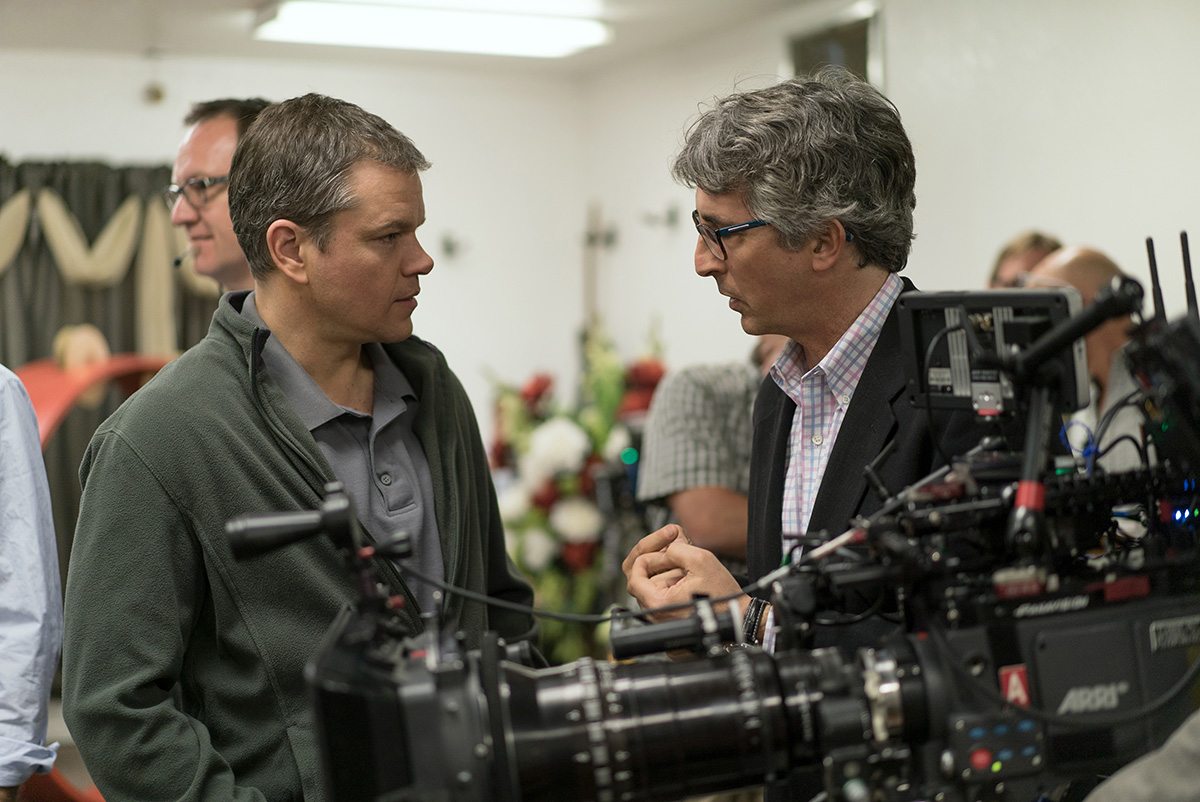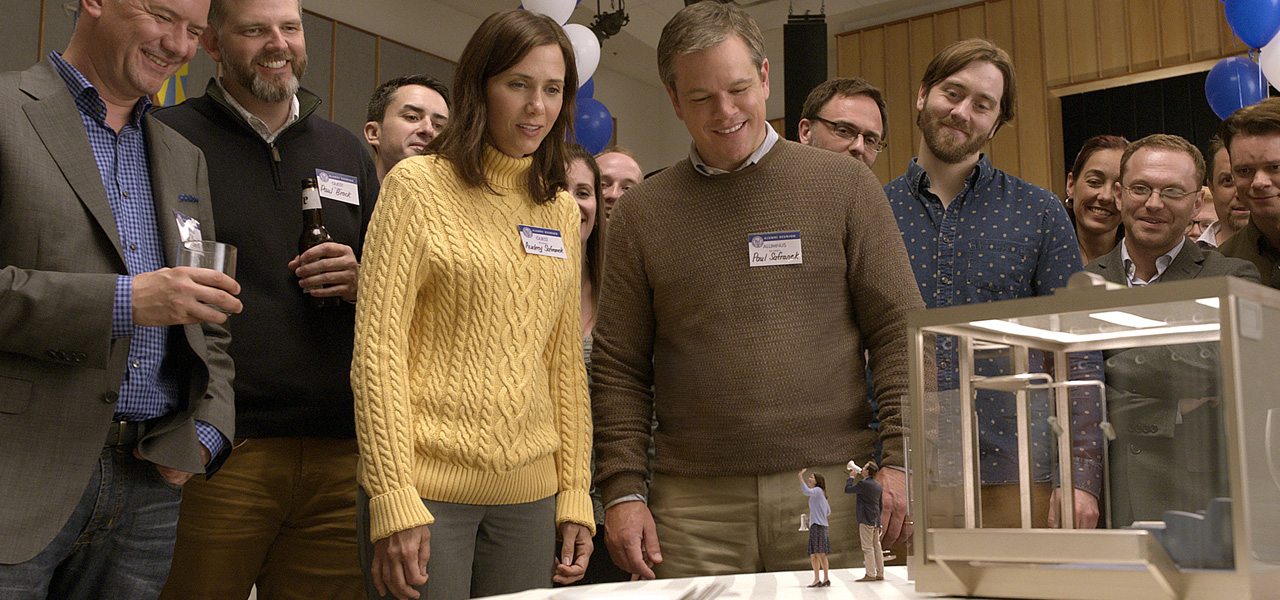
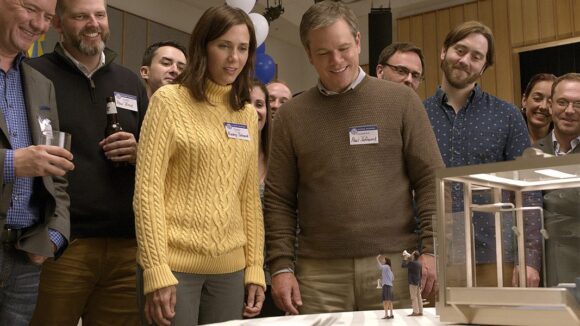
How ‘Downsizing’ Managed Its Miniature Moments
In Downsizing, Alexander Payne’s film starring Matt Damon, a new procedure has been invented that allows humans to shrink their bodies. That story point presented an immediate challenge to the filmmakers; small people, 14 times smaller than normal, would be appearing in scenes together with their larger counterparts. It meant that a methodology for filming scenes with different scaled persons and objects would be necessary.
That methodology – from planning, shooting, and through to post-production – involved significant visual effects work, which was spearheaded by James E. Price. The visual effects supervisor worked with studios including Industrial Light & Magic, Framestore, Rodeo FX, Lola VFX, and Atomic Fiction.
Price spoke to Cartoon Brew about the steps taken to ensure the miniaturization vfx work in the film looked realistic, and how the result was intended not to feel like a visual effects film at all.
The challenge of miniaturization
It was important for Payne and for Price in making the film that any visual effects effort largely went unnoticed. “When I first started on the movie,” recalled Price, “and Alexander and I were really getting into designing the visual effects, one of the things he said to me was, ‘I’d like you to trick me into making me think I’m making a normal movie.’ What I took away from it was he wanted to be able to work the way he was used to working and have the confidence that he was seeing the shots properly.”
The overall methodology was to film real backgrounds first with normal-sized characters. Then, knowing that the small people were 1/14th scale, any measurements involving sets, cameras, and lighting were scaled up 14 times. The characters who would be small were typically filmed as greenscreen elements. These elements would then be composited into the previously shot background plates. That work was largely handled by ILM.
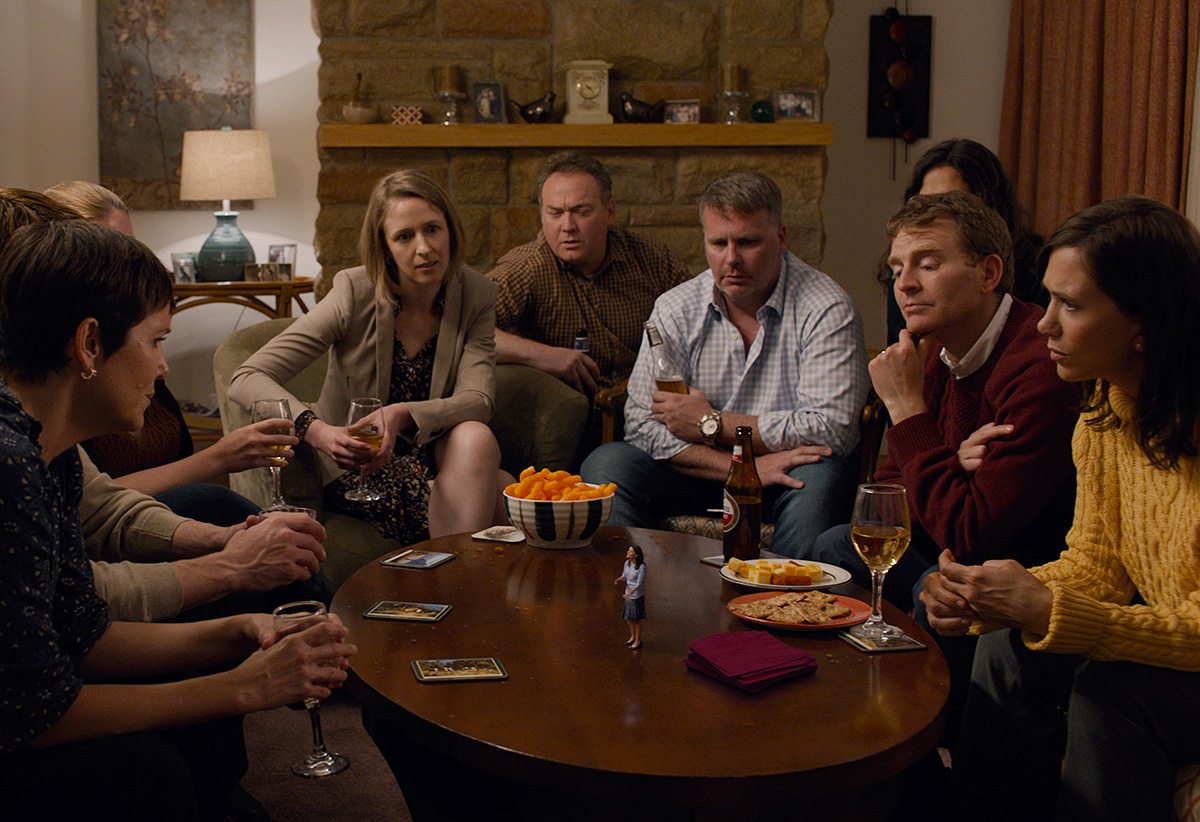
A number of things were done during filming of the background plates, too, to help the process. For instance, 3d-printed dolls were shot in the place of small people in the sets (and later painted out) – they gave a guide to the cinematographer in framing the shots and an eyeline for the normal-sized actors. Oversized partial sets were also part of the greenscreen elements, even if they might also be painted out later on.
“For instance,” said Price, “in the case of Dave (Jason Sudeikis) sitting on the cracker box when he’s talking to Paul (Matt Damon) in the kitchen, we built an oversized box for Jason to sit on. That helped him understand where he was in the scene and helped us line up the camera and also grounded Alexander in terms of understanding the composition. Another thing it gave us was accurate lighting. If the actor was in close proximity to something like the cracker box, then the oversized set gave us the proper bounce light and helped integrate lighting into the actual scene.”
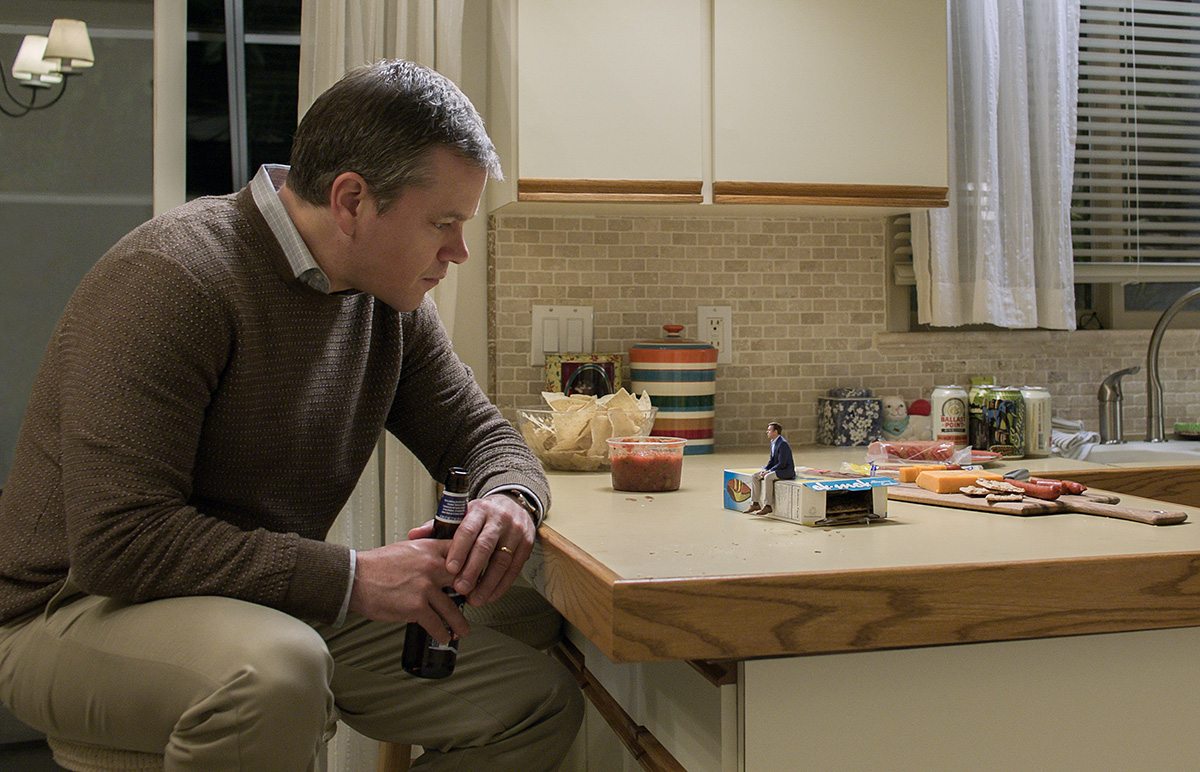
Macro-level reality
One of the challenges with miniaturization shots, particularly when the camera is focusing on a small person in an oversized environment, is that the environment needs to have a higher level of detail than normal (because the viewer is effectively seeing it up close). The other challenge is to ensure backgrounds behind the small person have an appropriate depth of field – this helps to ensure they still look small.
On Downsizing, Price dealt with these challenges by first tackling what the accurate depth of field would be during shooting, but then allowing for it to be changed in post-production. “We did that by a combination of focus stacking, shooting multiple focus passes at different depths,” said Price. “Then we also shot multiple f-stops. We just didn’t want a situation where the actual optics and physics would result in a background that was so blurry or a depth of field that was so shallow that it was distracting. We tried to find that middle ground between what optically would tell the audience that the subject was small, but [which] still looked interesting and beautiful.”
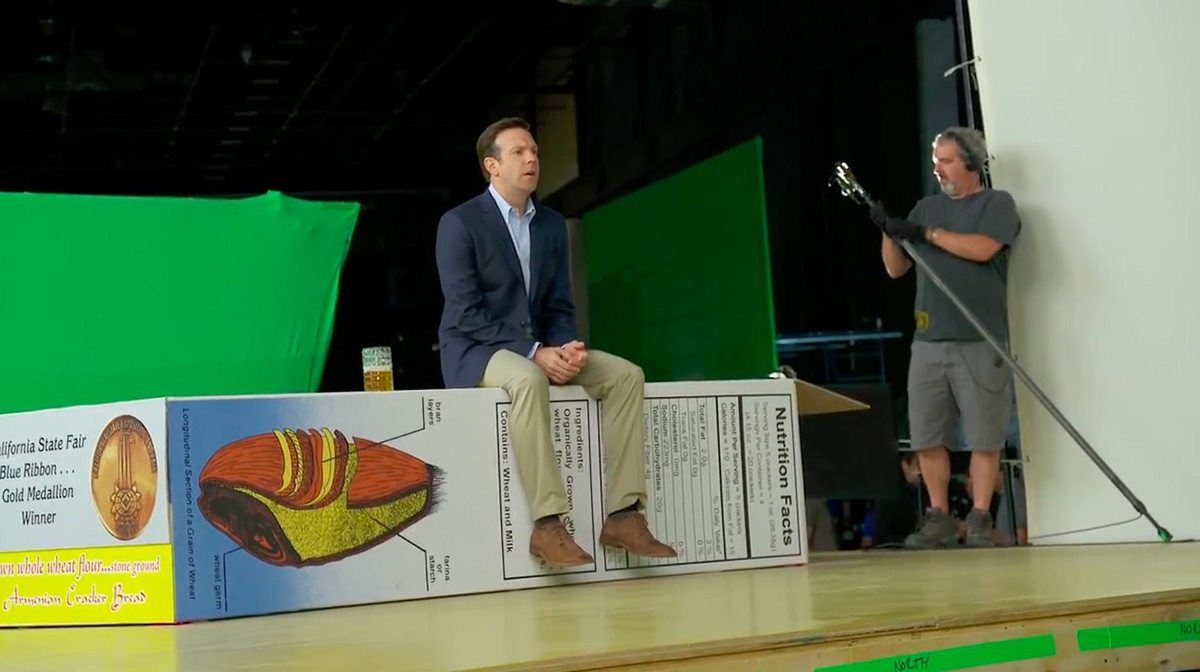
Lighting was also an important consideration. To duplicate the lighting from normal-sized backgrounds to the greenscreen elements, the light sizes would be scaled up, and Price implemented a system involving two gray balls. One was two inches across and another was 14 times bigger, 28 inches across in diameter.
“We would put the small gray ball in next to the doll when we were shooting the background plate,” said Price. “Then when we went to shoot the greenscreen element, we would put the 14 times bigger gray ball in and do a split screen on the video tap between the two gray balls. They lined right up. It was great to see the 14 times ball on the greenscreen set fit exactly onto the small ball from the original background plate. By mixing the two together, we could look at the light source positions and the area of the light source so that we could match the appropriate softness for the person.”
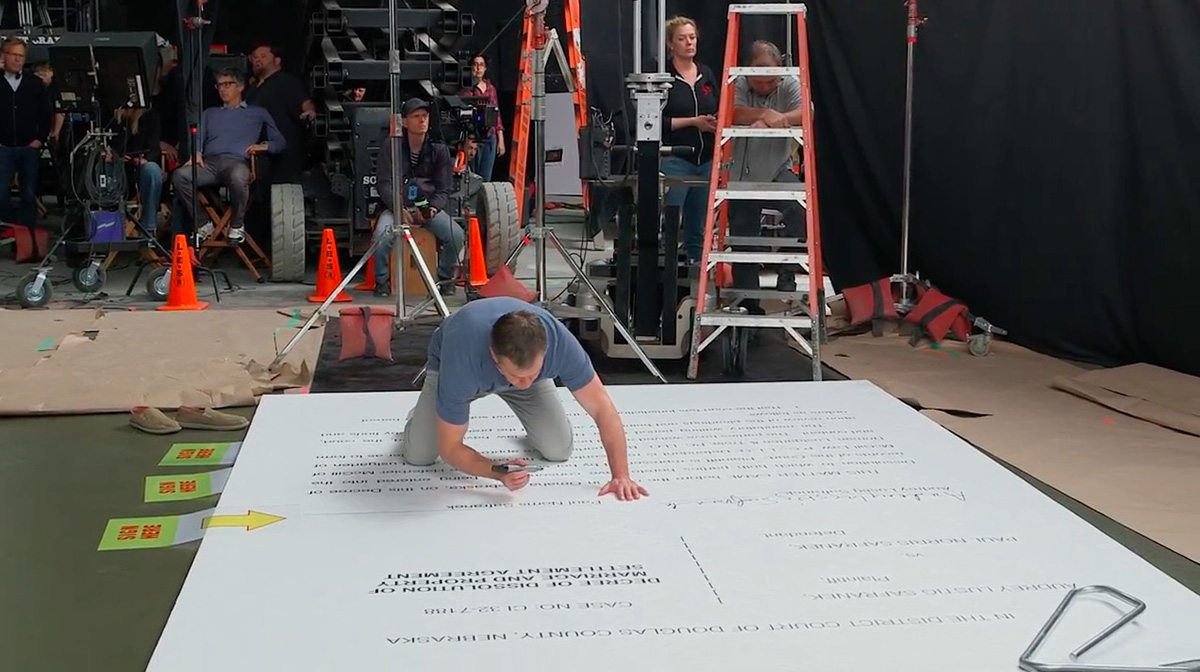
Welcome to Leisureland
Upon being shrunken down, Damon’s character moves into Leisureland Estates, a purpose-built community for small people. Here, most of the settings were scale-appropriate, so they didn’t require small people to be composited into large environments. But there were several cg additions for the community, including a large net and a wall.
To preserve a slightly ‘fake’ and ’fabricated’ look to the housing, exisiting communities under construction were filmed from certain angles that made them feel miniaturized. “We would also paint out seams in the curb or cracks in the road so that everything had a kind of slightly lower level of detail and cleaner feel,” said Price. “And if you were driving past a lake or you see a large body of water, we treated it as if it was small. So the ripples were bigger and the motion of the water was different. The character of the reflections was different. That also added to the small scale feel of Leisureland.”
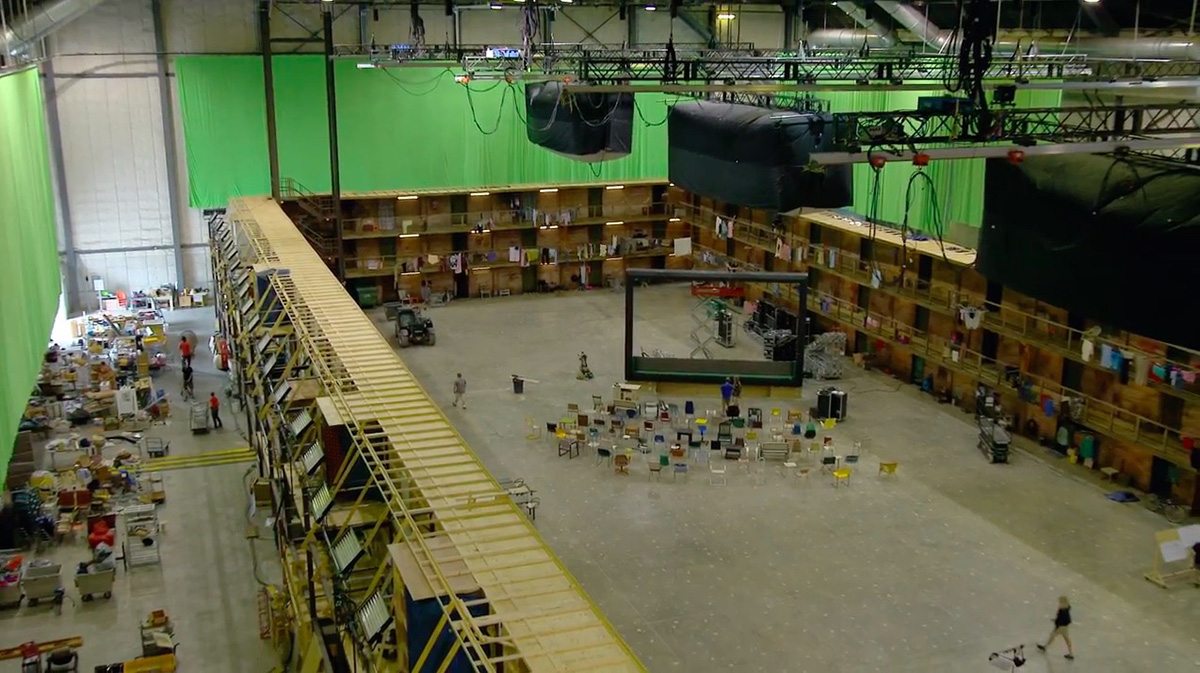
Damon’s character meets Ngoc Lan Tran (Hong Chau), a Vietnamese activist shrunk against her will, who also lives in a ‘workers’ city’ outside of Leisureland made out of containers. “There were two locations for that,” outlined Price. “There was the exterior leading up to the workers’ city. That was shot in the back lot in Toronto in a large gravel field. The art department built and dressed three construction trailers that were converted into apartment buildings. We photographed them with a still camera for reference to help us build our cg sets. For the interior, we built the bottom three floors of the set and the ceiling was completely digital. Then the upper floors were a combination of element photography and digital manipulation of those elements to create the seven or eight stories up above.”
Keeping it seamless
There are hundreds of visual effects shots in Downsizing, but the film is certainly not a visual effects movie. That was always the constant for the visual effects supervisor.
“One of the things that I said as I was supervising the effects and working with the vendors was that we wanted to get it and then forget it,” said Price. “We wanted the audience to be established and the characters to be established in this environment, but then not keep reminding them over it. We wanted to allow them to accept it and go with it, but then let them stay engaged in the story and in the narrative rather than be distracted by the visual effects.”
